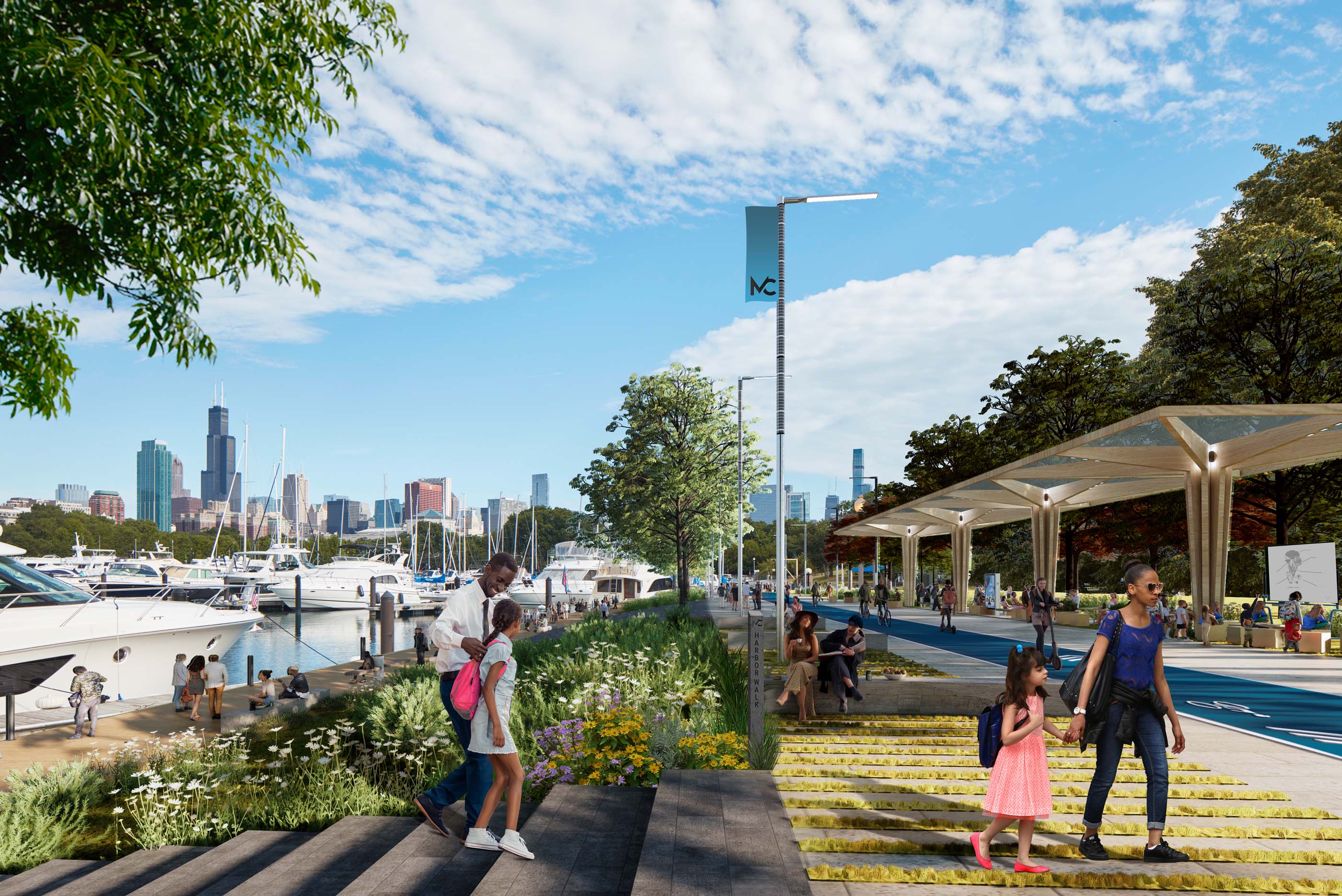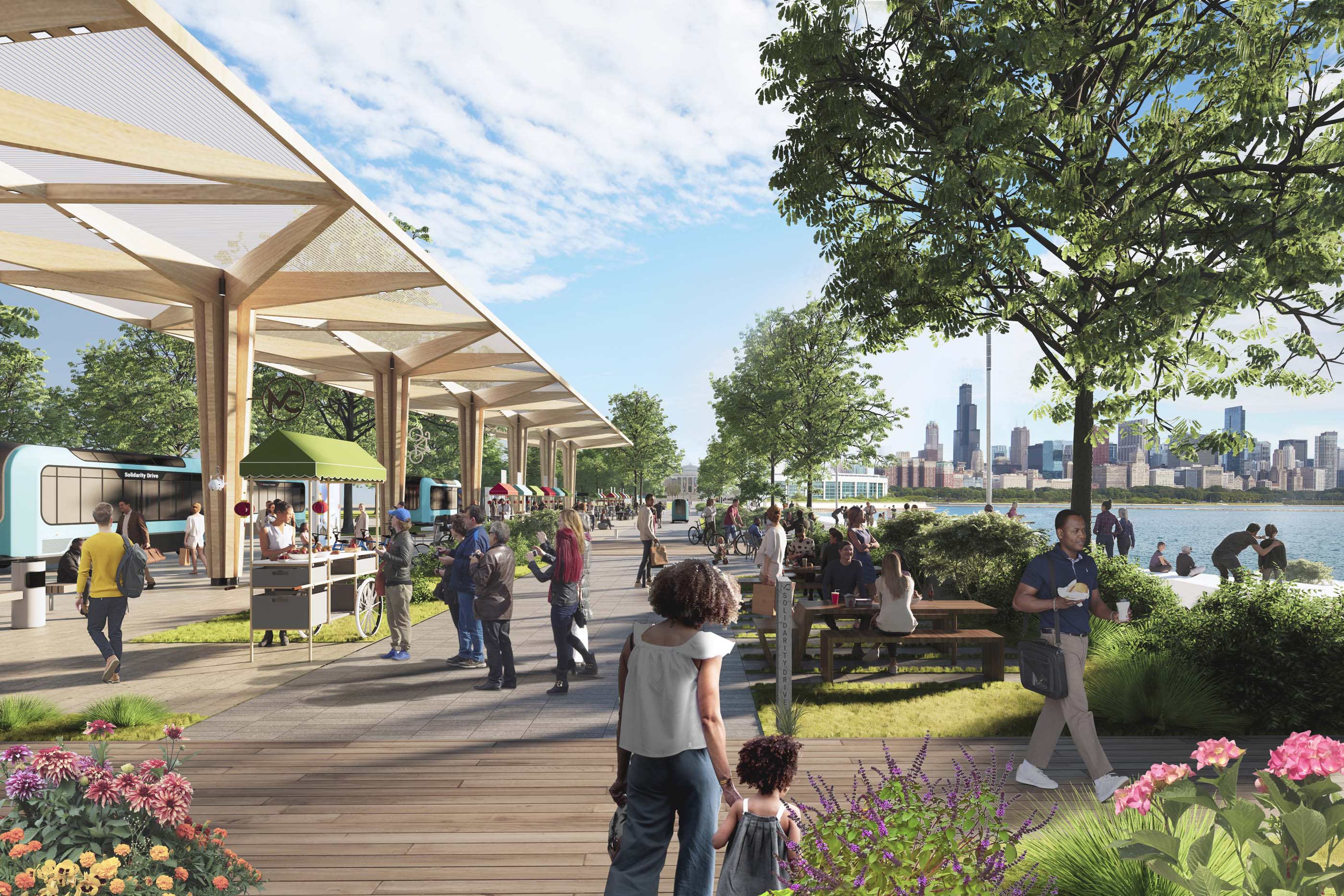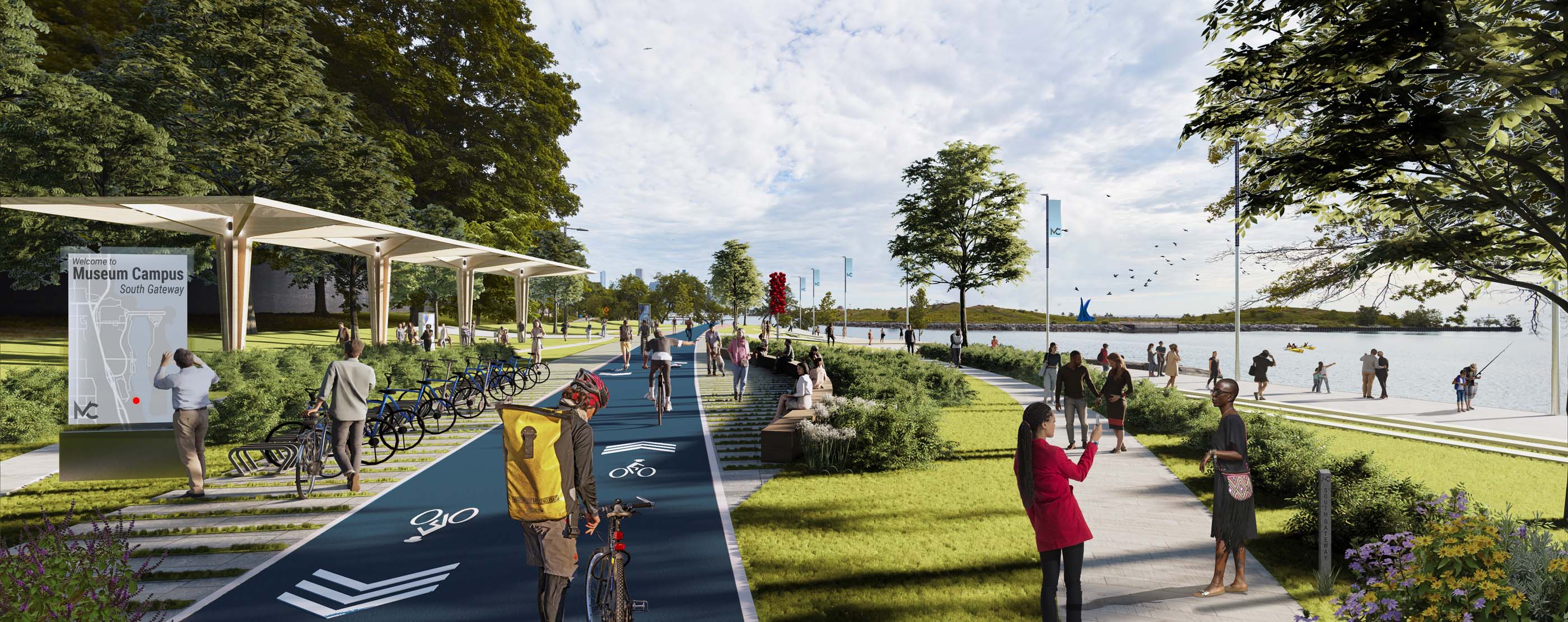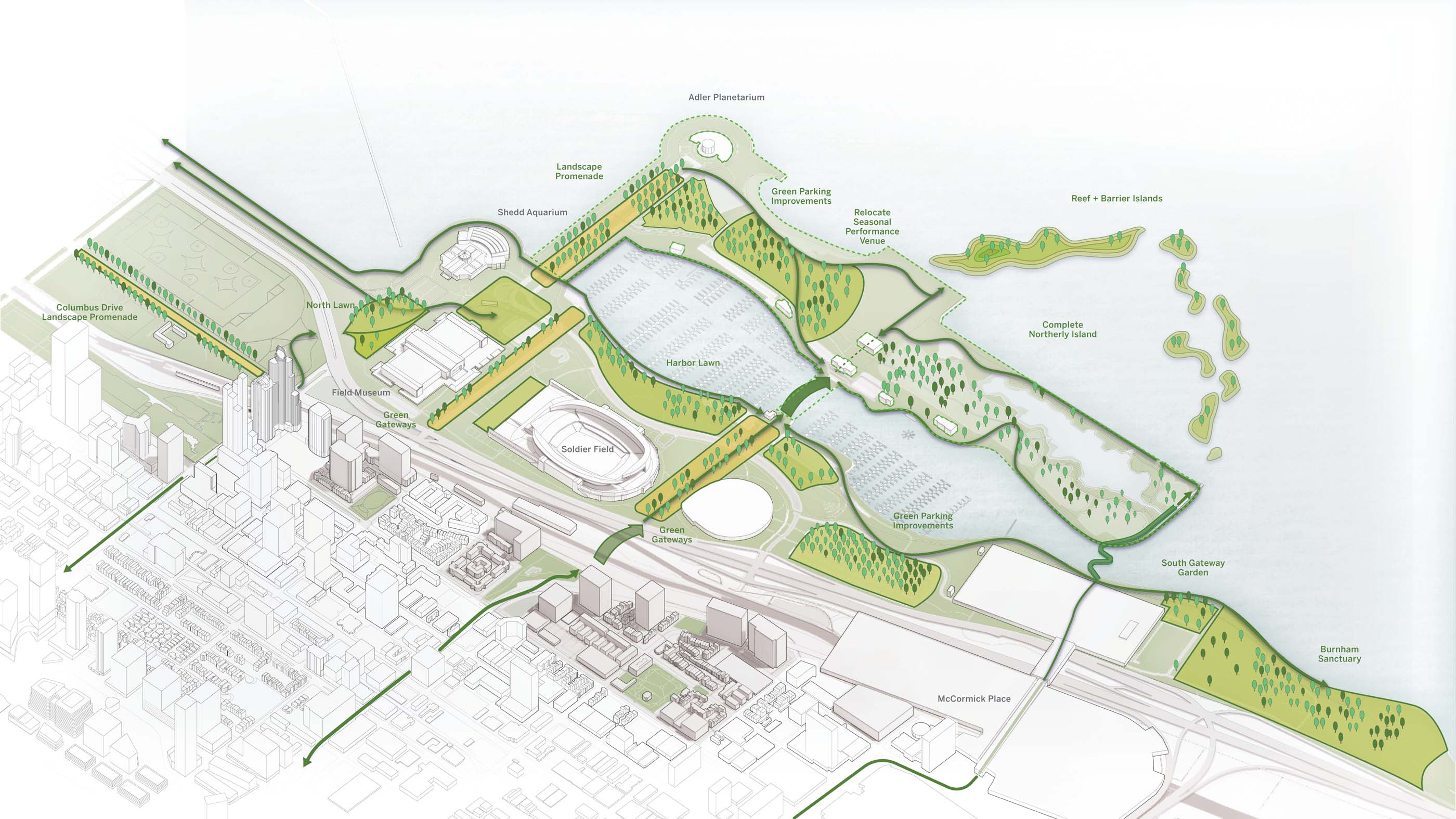Chicago unveils a lofty waterfront proposal for a revamped Museum Campus
A lofty proposal to redevelop Chicago’s Museum Campus proposes increasing the 57-acre park complex’s accessibility and connectivity to the greater metropolitan area and connecting the myriad cultural venues situated along the lakefront strip to one another. A working group, formed in February, led by Mayor Lori Lightfoot has produced an extensive report outlining a vision for the site’s enhancement.
The proposed redevelopment would comprise a 307-acre area that stretches from Roosevelt Avenue at the north to the Stevenson Expressway, encompassing the Museum Campus, the Burnham Harbor, and the narrow islet Northerly Island. Renderings produced by Chicago’s SOM team visualize the recommendations set forth in the city’s report. An article published by Block Club Chicago, poked fun at the firm’s first-round of visualizations, which depicted a number of “easter eggs” or maybe mistakes, including actress Katie Holmes and her daughter out and about, which has now been removed from the report since it was released on July 7. A carefully placed tree omitting the view of Chicago’s Trump Tower—ironically also designed by SOM—still made the final cut.

Windy City venues including Soldier Field, the Field Museum, McCormick Place Lakeside Center, and the Shedd Aquarium–currently undergoing a $500-million renovation—are among the existing “anchor institutions” located at the site. In its report the City of Chicago cited one of the main reasons for enhancing the campus was to take down the “physical and socioeconomic barriers” inherent in its current design and provide “equitable access.” Lack of transportation and pricy amenities limit who is able to both access and afford the facilities.
“People may not see themselves or their communities reflected in the buildings and activities on the Campus. In many cases, Chicagoans may not even know these assets exists, despite living in such close proximity to it. We must begin to change that so that all of our residents can access the natural and other beauty, history and entertainment opportunities of the Museum Campus, year-round,” Lightfoot said in the report.

While the project is very much still in its infancy, a series of objectives have been drafted, defining short and long term goals. Long-term goals include constructing a pedestrian bridge across the harbor waterway and adding numerous bus stops, as well as developing new transportation lines that extend throughout the campus itself and into the larger metro area, which will involve coordination with the Chicago Transit Authority.
In the meantime smaller-scale projects such as improving on-site parking and creating designated pick-up/drop-off locations for public transit and ride shares would make a start at improving the campus’ accessibility issues. The addition of wayfinding and signage devoted to place-making will introduce, or even re-introduce, visitors to the Museum Campus and its offerings.
The narrow strip of land abutting the harbor, known as Northerly Island, houses buildings in need of renovation or expansion; a series of adaptive reuse projects here and elsewhere on the campus would transform these spaces. Among them is the Meigs Field terminal building, a 6,000-square-foot visitor center, event space, and office building that could be expanded to accommodate a learning or education facility. In its redevelopment plan the city proposes using the space to create the Great Lakes Climate Lab, an institution that could partner with the nearby museums to study climate change, resiliency, and other issues facing the area’s future.

Access to Northerly Island is limited as the piling system is eroding the land instead of protecting it from flood and storm damage. A plan developed by Chicago-based Studio Gang in 2011 proposed building an “outer barrier reef” in Lake Michigan to mitigate the impact of lakeshore erosion. In other locations on the campus an extensive landscape overhaul would bring native vegetation to the site, revitalizing the local ecosystem, while also reducing maintenance and energy costs.

Another major renovation has been pitched for Soldier Field, an open-air stadium used by the Chicago Bears and Major League Soccer team Chicago Fire. The sports venue is one of the smallest in the NFL; proposed plans to revamp its concourses with new signage, upgrade its seating, resurface the turf, and potentially enclose it with a dome or roof would increase the stadium’s capacity while also augmenting visitor experience, the advisory panel suggested. The working group also recommended renaming the stadium with a big name brand sponsor, similar to SoFi Stadium in Los Angeles.

With coordinated efforts the revamped campus has the potential to become an even more activated site—a place with historical, cultural, and environmental significance that can be enjoyed year-round. The next phase of the project, following the publication of this latest report, involves determining who is responsible for executing each of the projects. Exactly how much the projects will cost and where the money will come from is still a work in progress.

